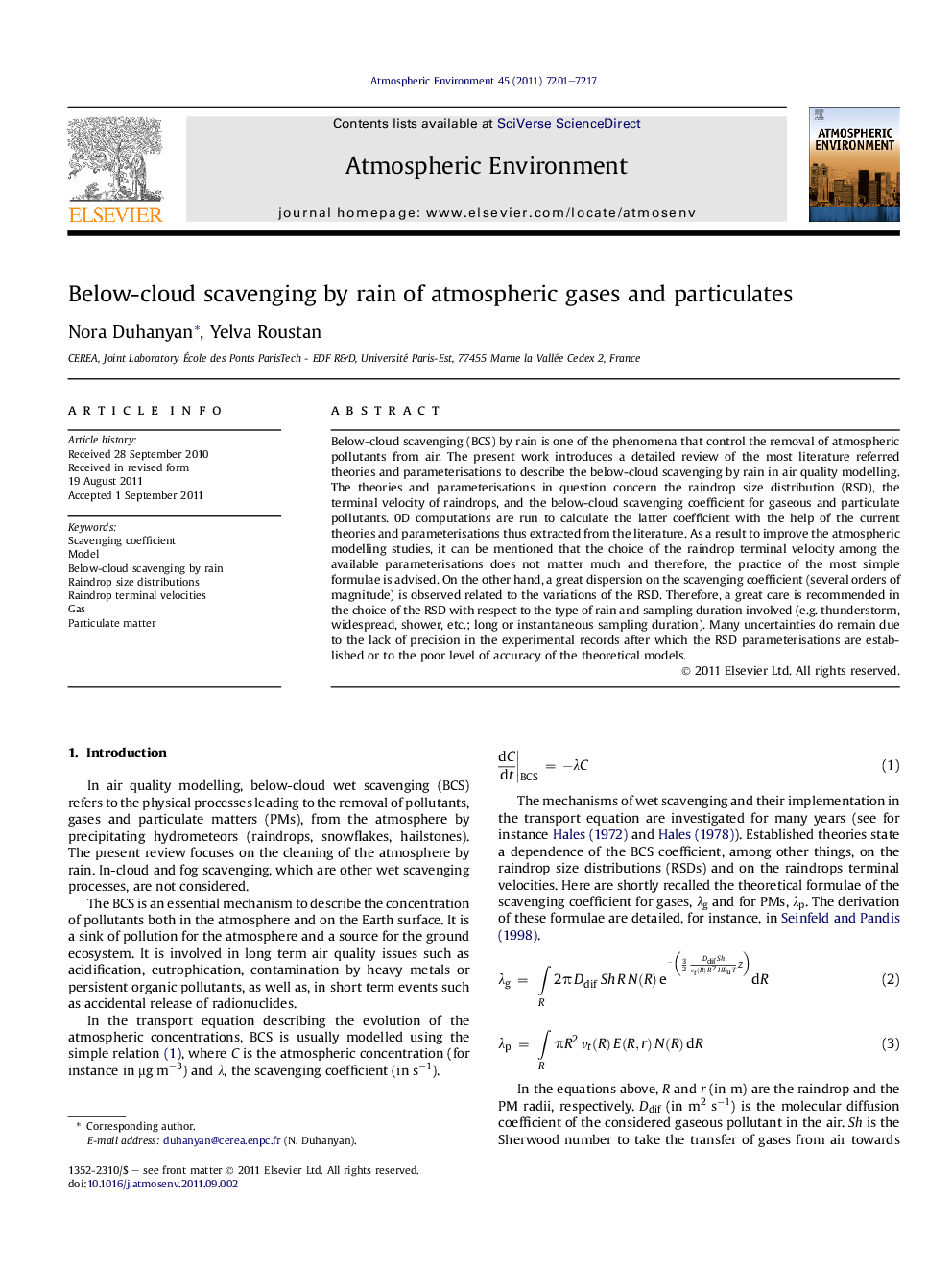| Article ID | Journal | Published Year | Pages | File Type |
|---|---|---|---|---|
| 4439159 | Atmospheric Environment | 2011 | 17 Pages |
Below-cloud scavenging (BCS) by rain is one of the phenomena that control the removal of atmospheric pollutants from air. The present work introduces a detailed review of the most literature referred theories and parameterisations to describe the below-cloud scavenging by rain in air quality modelling. The theories and parameterisations in question concern the raindrop size distribution (RSD), the terminal velocity of raindrops, and the below-cloud scavenging coefficient for gaseous and particulate pollutants. 0D computations are run to calculate the latter coefficient with the help of the current theories and parameterisations thus extracted from the literature. As a result to improve the atmospheric modelling studies, it can be mentioned that the choice of the raindrop terminal velocity among the available parameterisations does not matter much and therefore, the practice of the most simple formulae is advised. On the other hand, a great dispersion on the scavenging coefficient (several orders of magnitude) is observed related to the variations of the RSD. Therefore, a great care is recommended in the choice of the RSD with respect to the type of rain and sampling duration involved (e.g. thunderstorm, widespread, shower, etc.; long or instantaneous sampling duration). Many uncertainties do remain due to the lack of precision in the experimental records after which the RSD parameterisations are established or to the poor level of accuracy of the theoretical models.
► Review on the below-cloud scavenging by rain of gaseous and particulate pollutants. ► Sensitivity of the scavenging coefficient to the raindrop size distributions. ► The RSDs are sorted out by rain type and sampling duration. ► Comparison of the parameterisations of the literature extracted SCs.
